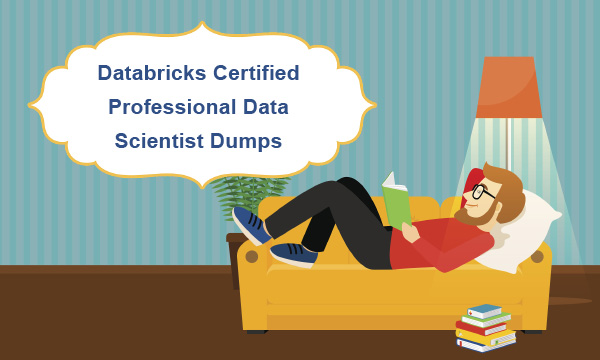Databricks Certified Professional Data Scientist Dumps
August 24,2021 04:15 AM
Databricks Certified Professional Data Scientist dumps are available, which will be the best material for you to study the test. The Databricks Certified Professional Data Scientist certification exam assesses the understanding of the basics of machine learning and the steps in the machine learning lifecycle, including data preparation, feature engineering, the training of models, model selection, interpreting models, and the production of models. We also collected Databricks Certified Professional Data Scientist exam related information for you to prepare for the test.

Databricks Certified Professional Data Scientist Exam
The Databricks Certified Professional Data Scientist exam also assesses the understanding of basic machine learning algorithms and techniques, including linear regression, logistic regression, regularization, decision trees, tree-based ensembles, basic clustering algorithms, and matrix factorization techniques.
Number of questions: 60 multiple-choice questions
Duration: 120 minutes
Passing score: 70% (42 of 60 questions)
Language: English
Price: $200
Databricks Certified Professional Data Scientist Exam Topics
The details of Databricks Certified Professional Data Scientist exam topics are available below.
Machine Learning Basics (17%)
Machine Learning Lifecycle (42%)
Machine Learning Algorithms and Techniques (33%)
Machine Learning Model Management with MLflow (8%)
Practice Databricks Certified Professional Data Scientist Exam Dumps
The latest Databricks Certified Professional Data Scientist exam dumps questions can help you test all the above exam topics. Share some Databricks Certified Professional Data Scientist exam dumps questions and answers below.
1.Suppose you have made a model for the rating system, which rates between 1 to 5 stars. And you calculated that RMSE value is 1.0 then which of the following is correct
A. It means that your predictions are on average two star off of what people really think
B. It means that your predictions are on average four star off of what people really think
C. It means that your predictions are on average one star off of what people really think
D. It means that your predictions are on average three star off of what people really think
Answer: C
2.In which of the scenario you can use the linear regression model?
A. Predicting tumor size reduction based on input as number of radiation treatment
B. Predicting Home Price based on the location and house area
C. Predicting demand of the goods and services based on the weather
D. Predicting sales of the text book based on the number of students in state
Answer: A,B,C,D
3.In machine learning, feature hashing, also known as the hashing trick (by analogy to the kernel trick), is a fast and space-efficient way of vectorizing features (such as the words in a language), i.e., turning arbitrary features into indices in a vector or matrix. It works by applying a hash function to the features and using their hash values modulo the number of features as indices directly, rather than looking the indices up in an associative array. So what is the primary reason of the hashing trick for building classifiers?
A. It reduces the non-significant features e.g. punctuations
B. Noisy features are removed
C. It requires the lesser memory to store the coefficients for the model
D. It creates the smaller models
Answer: C
4.You are creating a regression model with the input income, education and current debt of a customer, what could be the possible output from this model.
A. Customer fit as a good
B. Customer fit as acceptable or average category
C. 1 and 3 are correct
D. expressed as a percent, that the customer will default on a loan
E. 2 and 3 are correct
Answer: D
5.You are asked to create a model to predict the total number of monthly subscribers for a specific magazine. You are provided with 1 year's worth of subscription and payment data, user demographic data, and 10 years worth of content of the magazine (articles and pictures). Which algorithm is the most appropriate for building a predictive model for subscribers?
A. Linear regression
B. TF-IDF
C. Logistic regression
D. Decision trees
Answer: A
Databricks Certified Professional Data Scientist Exam Dumps PDF & SOFT | 1 Year Free Update | Money Back Guarantee
- Related Suggestion
- Databricks Certifications Tacks and Preparation Dumps for You to Study November 10,2023

